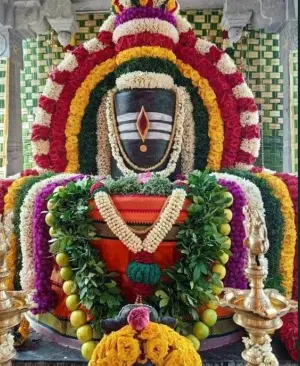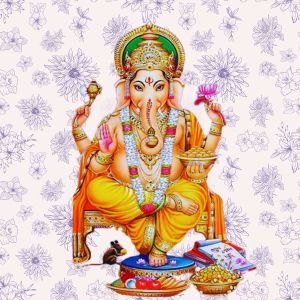Saivagamas

Agamas are religious texts of Hinduism.
The sadhana and worship of the Shaiva, Vaishnava, and Shakta sects of Hinduism are based on the Agamas.
Agamas are mainly about idol worship and temples.
The term Agama indicates knowledge that is transmitted in a guru - shishya lineage.
Vedas are called Nigamas.
Agamas are the essence of Vedas.
They prescribe the same code of conduct that Vedas also prescribe.
Saivism was prevalent throughout Bharata Varsha.
Its main centers were - Pasupatinatha of Nepal, Kedareswara, Vishwanatha of Varanasi, Somanatha of Saurashtra, Ramanatha of Rameswaram, Mahabaleswara of Gokarna, Mahakala of Ujjaiyini, Gangadwara of the Himalayas, Virupaksha of Hemakuta, Sasisekhara of Prabhasa, and Vijaya of Kashmir.
There were several sects within Saivism such as Pashupata, Kapalika, Karunika Siddhanti, Maha vrata dhara, Kala damana, Kala mukha, and Maheshwara.
Saivagamas
Saivagamas are of four types -
- Saiva
- Pashupata
- Lakulisha
- Soma
Saivagamas belong mainly to the Kashmir and the South Indian traditions.
The Kashmir tradition is also known as the Trika system.
In South India, Saivism flourished in the forms of Tamil Saivism and Veera Saivism of Karnataka.
28 Saivagamas of South India
Agamas are subdivided into Mulagamas and Upagamas.
The Mulagamas are subdivided into Shivabheda and Rudrabheda.
Shivabheda (Para)
- Kamika
- Yogaja
- Achintya
- Karana
- Ajita
- Deepta
- Sukshma
- Sahasra
- Amshumadbheda
- Suprabheda
These ten Agamas were received by Shivabhattaraka first.
Rudrabheda (Apara)
- Vijaya
- Nishvasa
- Swayambhuva
- Anala
- Veera
- Raurava
- Makuta
- Vimala
- Chandrajnana
- Mukhabimba
- Prodgita
- Lalita
- Siddha
- Santana
- Sarvokta
- Parameshwara
- Kirana
- Vatula
These 18 Agamas were revealed to the Rudras.
Together these 28 Agamas contain 20,10,00,10,19,38,44,000 verses.
These Agamas have got their own Upagamas.
Put together the texts of Saiva Siddhanta of South India are 207 in number.
Sections of Agama texts
Jnana Pada
elaborates the concepts of Saivism.
Kriya pada
deals with idol worship at home and temples, singing of shlokas, etc.
Charya pada
prescribes rules for sadhakas.
Yoga pada
about the higher aspects of sadhana involving Yoga.
Initiation into the Agama system
Deeksha or initiation is a very important part of Agama tradition.
The initiator is called Guru, Deshika, or Acharya.
The initiated is called Shishya, or Deekshya.
During initiation, the disciple is purified with the power of mantras.
His impurity which can be a hindrance to his spiritual progress is washed away.
Siva himself is present in the body of the guru at the time of giving initiation.
There are three stages in Agama Deeksha - Samaya, Vishesha, and Nirvana.
Nirvana deeksha has two stages - Bhautika and Naishtika.
The padas taught in each stage are as follows -
- Kriya pada - Samaya
- Charya pada - Vishesha
- Yoga pada - Bhautika
- Jnana pada - Naishtika
Samaya deeksha confers Siva Salokya.
Vishesha deeksha confers Siva Sameepya.
Bhautika deeksha confers Siva Saroopya.
Naishtika deeksha confers Siva Sayujya.
Saivagamas assert that liberation is obtained not through knowledge but through deeksha.
Someone is initiated only when Siva’s grace falls upon him.
Recommended for you
Food is not just food
 Click here to know more..
Click here to know more..
Mantra for removal of Impediments

om namaste vighnaraajaaya bhaktaanaam vighnahaarine . vighnadaatre hyabhaktaanaam ganeshaaya namo namah' ......
Click here to know more..Shakambhari Ashtottara Shatanamavali

asya shree shaakambharee-asht'ottarashatanaamaavalimahaamantrasya brahmaa ri'shih', anusht'upchhandah' . shaakambharee devataa . sauh' beejam . kleem ....
Click here to know more..
English Topics
Temples
Click on any topic to open
- 71 Ahobilam - Lord Narasimha's Sacred Abode
- 70 Malaikottai Temple, Trichy - Discover Spiritual Bliss
- 69 Jambukeswarar Temple, Trichy
- 68 Vaitheeswaran Koil - A Healing Pilgrimage
- 67 Dwaraka and Somnath
- 66 Khidkali Mahadev Mandir
- 65 Pongu Sani Temple, Thirukollikadu
- 64 The Unique And Fascinating Jharni Narasimhaswamy Temple, Bidar
- 63 Yamunotri: A Spiritual Haven in the Himalayas
- 62 Anantha Padmanabha Swamy Temple - Fascinating Legends
Please wait while the audio list loads..
30
Ganapathy
Shiva
Hanuman
Devi
Vishnu Sahasranama
Mahabharatam
Practical Wisdom
Yoga Vasishta
Vedas
Rituals
Rare Topics
Devi Mahatmyam
Glory of Venkatesha
Shani Mahatmya
Story of Sri Yantra
Rudram Explained
Atharva Sheersha
Sri Suktam
Kathopanishad
Ramayana
Mystique
Mantra Shastra
Bharat Matha
Bhagavatam
Astrology
Temples
Spiritual books
Purana Stories
Festivals
Sages and Saints
